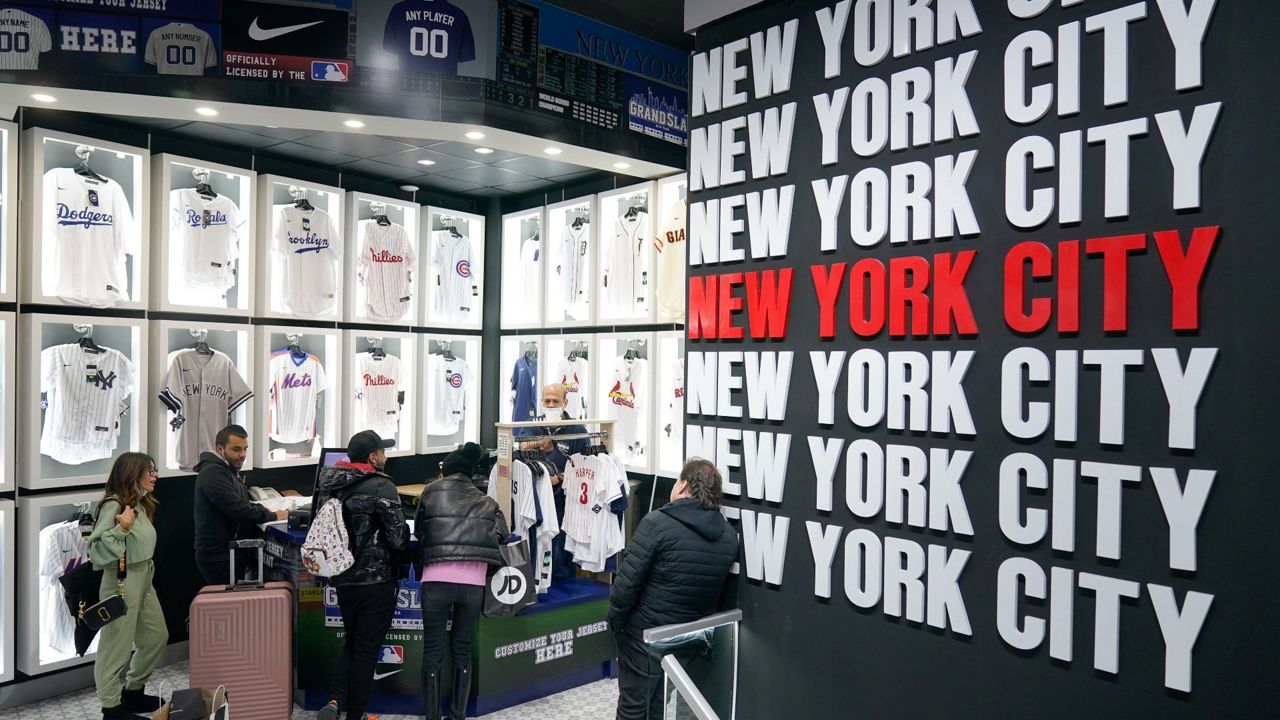Sammy Davis’ thriftstore tour business had a booming November — one of her best months since she resumed tours after pausing business for more than a year because of COVID-19.
She hoped that the upward trend would continue through the holidays.
“And then December hit — crickets, crickets, crickets,” Davis said.
Davis’ business, NYC Bargain Secondhand Thriftstore Tour, which typically takes people on group tours – mostly out-of-towners – to several second-hand clothing stores, was hit hard by the winter surge of the COVID-19 virus.
Davis said she went from 13 tours in November to three in December.
This surge in the virus, which was fueled predominantly by the omicron variant, severely impacted New York City and its tourism industry.
By mid-December, cases soared to record numbers with the positivity rate doubling within three days. Many businesses delayed or shelved altogether their return-to-work plans and thousands of airline flights were canceled, partially attributed to staff shortages.
The hotel industry, which has been working toward a recovery since COVID-19 first hit the city and devastated tourism, saw its occupancy rate start to dip by the second full week of December, just weeks after news broke of the omicron variant.
For the week ending Dec. 11, the occupancy rate was 81.5%, but by the end of the next week, it was 73.8%. The following week, which was Christmas weekend, it hit 62%, and New Year’s weekend saw a 65.8% rate, according to travel research firm STR.
Another metric that the hotel industry looks at closely is revenue per available room, known as RevPAR. It takes the average day rate and spreads it across all the available rooms — instead of just the percentage of rooms that were occupied.
At the end of the week on New Year's Eve, the RevPAR was $185, according to the Hotel Association of New York, which was far below the anticipated $250 prior to the onslaught of omicron.
“It's a huge drop,” said Vijay Dandapani, president of the Hotel Association of New York. “And what we expected for December 31, which is the best day in the city for hotels generally in New York pre-COVID and even after COVID — we were expecting it to be the best — it was disappointing to say the least.”
The $65 difference in RevPAR that week ending on Dec. 31 amounts to a loss of about $7.6 million across the city’s 117,000 hotel rooms.
“That would have gone to the bottom line of all these hotels, and would have gone towards paying bills, which is simply not there,” Dandapani said.
At the end of November, before people understood how quickly and severely omicron would spread, business owners in the hospitality industry were feeling optimistic.
“We were climbing very well,” said John Fitzpatrick, owner of Fitzpatrick Manhattan in midtown. “We were coming back up to the 80-95 [occupancy rate].”
Fitzpatrick said reservations at his hotel dropped by about 25% by the end of December.
“It's worrying, absolutely. Are we disappointed? Yes. We thought we were getting on a positive note, but I’m truthfully, very disappointed,” he said.
Experts say it’s still too soon to predict what long-term impacts this might have on the recovery of the hospitality industry.
“Every hotel in the city is a long distance from making profits — a very long distance — and every time you lose revenue like this, the profit element that used to be there pre-2019 is now pushed further out,” Dandapani said.
Restaurants and bars were similarly impacted by the spread of the virus in December.
“They were hoping at least to make some money to pay off some debt,” said Andrew Rigie, executive director of The New York City Hospitality Alliance. “And then omicron hit, and companies canceled all their holiday parties. Many people canceled reservations.”
Industry executives are still holding on to a sense of optimism though as they wait and see what happens next with the virus, pointing to the adaptability of the industry.
“Whenever there's been a challenge facing us, we've been able to attack it [like] the Key to NYC, the recent mask requirement, masking up in Broadway, vaccination requirements for restaurants and indoor venues and Broadway, and international visitors being vaccinated before they can come here,” said Chris Heywood, executive vice president of global communications at NYC & Company, the city agency that oversees tourism.
And while January and February are typically slower months for the tourism industry in New York City, people are still on guard when it comes to raising expectations.
“Optimism will return once we have a clear handle of the prognosis for omicron,” said Dandapani, who said we should have a better understanding of the long-term recovery outlook around March.
But for people like Davis, who runs the thrifting tour business, every cancellation can have an impact on staying in business in the long-run.
“I don't know how January is gonna be,” she said. “I have two [tours] on the books, but I am apprehensive and I am emotionally and mentally prepared for those to be canceled.”
